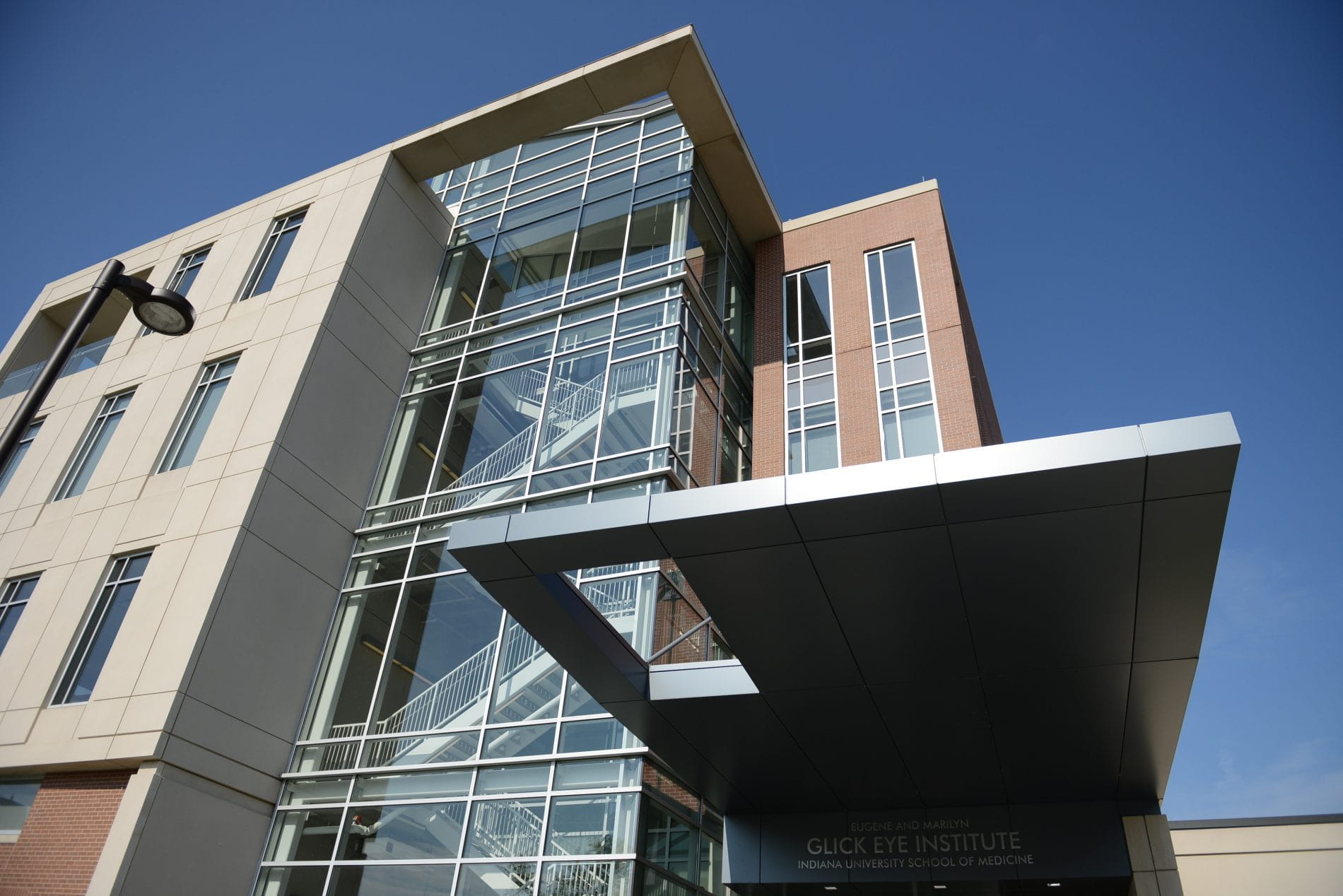
In 2009, Indiana University School of Medicine Department of Ophthalmology broke ground on the Eugene and Marilyn Glick Eye Institute. The building on Michigan Street in Indianapolis, with its ornate windows and signature sculpture, is truly an intersection of health care, research and education, said Louis Cantor, MD, who was the chair of the ophthalmology department when the project began.
Inside the building on its first floor, a clinic serves patients suffering from vision loss and eye disease, along with a state-of-the-art conference room and optical shop. The three floors above are dedicated to administration, learning and advancing the science to prevent and reverse vision loss.

The Glicks provided the university $20 million to construct the eye institute and another $10 million in endowment funds to ensure it would have a lasting impact and advance the recruitment of faculty and scientists. Many other generous donors also came forward—whose names now decorate the building’s lobby—resulting in an additional $12 million through 2014.
Before the Eugene and Marilyn Glick Eye Institute was built, department faculty were spread out across the university’s Indianapolis campus with little shared space for discussion and idea sharing, said Cantor, who is now a professor emeritus. There were clinics in each hospital and office space in the Rotary Building, as well as laboratories scattered across campus for those doing basic science research. It was difficult for colleagues to interact with one another since time together was limited mostly to regular faculty meetings.
That lack of communication changed since the department moved into the Glick, Cantor said. It’s unique for a department to have the advantage of this shared space—many at other institutions are spread among buildings and hospitals as the ophthalmology department once was— and he said he believes the faculty and staff is better for it. Being in contact with other thinkers and medical minds fosters creativity in research labs and in exam rooms, breeds camaraderie and helps lead to breakthroughs, he said.
“Buildings don’t do things; people do,” Cantor said. “But the Eugene and Marilyn Glick Eye Institute supports the people. It gives them a sense of purpose, a reason for why they’re here.”
Energy Efficient
The Glick Eye Institute was the first building on any of IU School of Medicine’s nine campuses to earn Leadership in Energy and Environmental Design, or LEED, certification from the U.S. Green Building Council, recognizing the efforts of the architects, construction crews and occupants to make the structure sustainable.
The institute received gold-level certification—the highest certification available.